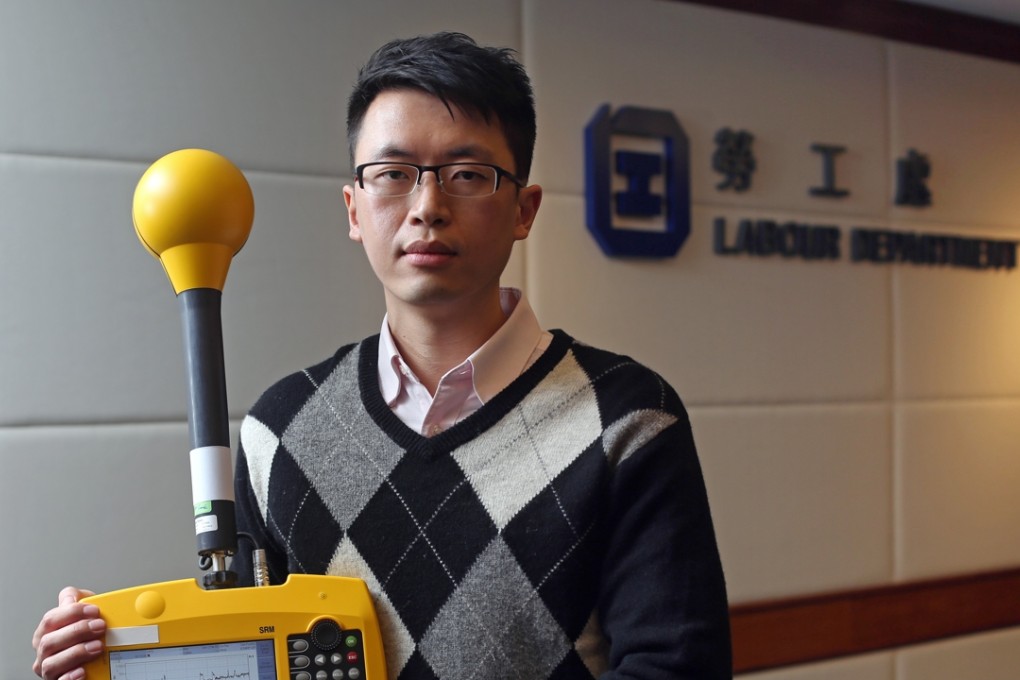Low key, high value: Hong Kong occupational hygienists toil for safer workplaces
As occupational settings proliferate in number and variety, a Labour Department team is charged with identifying long-term dangers

They do not grab headlines during construction accidents, but a group of government officers is charged with the difficult task of identifying long-term hazards in the workplace, with an increasing number of site inspections.
“You’ll see the occupational safety team at the big-scale accidents,” said senior occupational hygienist Cheung Hon-chung. “Our work is mostly focused on environmental hazards that typically have a gradual but long-term effect on people.”
READ MORE: Survey finds a quarter of Hong Kong’s working population show signs of depression and anxiety
But Cheung said he and his colleagues had increasingly looked at office spaces too, as afflictions related to long-term sitting became more rampant.
Occupational hygienist Duncan Wong Man-ho said his team tested levels of dangerous gas at factories as well as dust particles at tunnel sites. He said he and his colleagues also monitored restaurants to ascertain whether office spaces and the areas allocated for dishwashing, among other situations, were too cramped.
“Sometimes we get emergencies, such as cases in which cleaners could have mixed the wrong kinds of cleaning agents together, possibly creating poisonous fumes,” said Wong. “These situations could cost lives.”
Assessments could also examine the way waiters lifted and carried food and the working environments inside kitchens, he added.